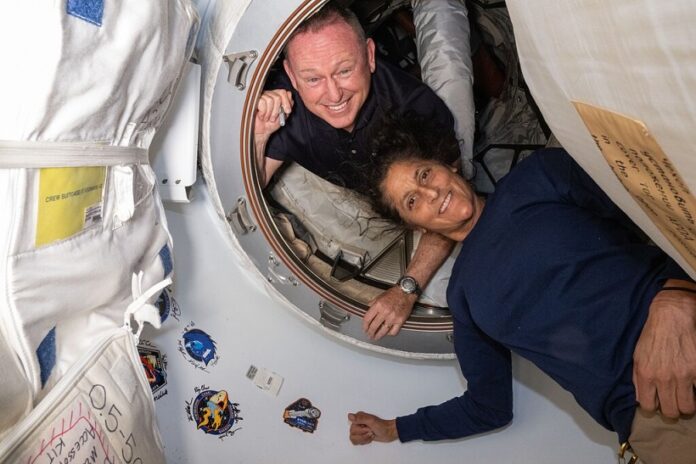It was two 737 Max crashes, the first, Lion Air Flight 610 on October 29, 2018, and the second, Ethiopian Airlines Flight 302 on March 10, 2019, that raised concerns about Boeing quality control coming from a company described as a world-leading manufacturer of commercial jetliners, defence, space and security systems.
Then it was Alaska Airlines Flight 1282 on January 5, 2024, when a door plug installed on a 737 Max 9 to increase passenger capacity by eliminating the mid-frame emergency exit door, blew out leading to an uncontrolled decompression of the aircraft narrowly avoiding another air disaster.
Add to that the controversial program around NASA’s Space Launch System (SLS) with Boeing as the primary contractor years behind schedule and well over budget.
Then finally, there was Boeing’s lucrative commercial space taxi contract with the Starliner Commercial Crew Program worth billions, and you cannot help wondering where the company that first introduced the 707 in 1958, and the prestigious 747, introduced in 1970 that remains in use today by Presidents of the United States, has made so many wrong turns.
The SLS is costing NASA more than double the original cost-plus contract price. Each Artemis SLS launch is now calculated to cost the agency $4.1 billion for what is essentially almost a 100% throwaway product. Only the solid boosters, relics from the Space Shuttle program, and the Orion spacecraft will be recovered and reused.
Starliner, the Boeing commercial crew spacecraft designed to carry 4 to the International Space Station (ISS), after multiple year delays and having approached $2 billion in costs, finally appeared to have made it off the factory floor in taking its first test flight in June with two aboard. The two arrived at the ISS but now look to have no ride home because of problems encountered with helium leaks and Starliner’s maneuvering and propulsion systems. They may have to stick their thumbs out and catch a Dragon to make it back to Earth with the earliest date next February.
NASA and Boeing have been studying what has been going wrong with Starliner as it remains attached to the ISS. Onboard batteries are designed to keep the spacecraft operational for 45 days. The mission was supposed to last eight. It’s now over two months.
NASA’s requirements for low-Earth orbit spacecraft like Starliner and Dragon request the ability to perform to specification for extended stays of 210 days in space which means as of this date the spacecraft is coming up on almost a third of the way there to make it no longer of use.
Five helium leaks occurred, one before, three during and one after Starliner’s flight to the ISS. Helium gas is used to regulate the amount of propellant used by the thrusters. To stop these leaks, the manifold valves have been closed. They will need to be reopened for Starliner’s return flight and there is enough helium on board with a margin of safety to get the spacecraft down to Earth. Then there is the problem of the reaction control system thrusters themselves. Five of the 27 failed during rendezvous and docking. The leaking helium may have been a factor and the crew used the ones still working to maneuver Starliner to dock.
With Starliner attached to the ISS since then, thruster testing has shown performance reverting closer to normal specifications. In ground tests back on Earth, however, the same tests show deformation in the Teflon used in the thruster design that could constrict propellant flow and compromise performance. This combination of helium leaks and thruster instability could prove disastrous if and when Starliner attempts to return to Earth, particularly with the two crew on board.
Then there is the problem of scheduling replacement crews with Starliner occupying an ISS docking port needed for future missions. A contingency plan by Boeing would reconfigure Starliner to fly crewless back to Earth sometime in September. That means the Boeing crew stays aboard ISS and hitches a ride back on a future Dragon flight. The earliest possible date would be next February. That 8-day test drive will have turned into a space mission lasting more than a half year.
It is not as simple as thumbing a ride back on a Dragon spacecraft. It will have to fly with only two crew aboard and two ballasted empty seats. The Boeing spacesuits will be unusable with Dragon so suitable suits need to be found or made.
When the Starliner crew departs they will likely be leaving in place of two people who currently are on board ISS and were formerly scheduled to leave next February. The normal crew rotations may be disrupted through more than one cycle.
Starliner was to be certified crew-worthy after this flight. Its next mission would have been scheduled for February 2025 with four aboard who would have remained on the ISS for six months. Now that looks likely to be a Dragon mission.
In other words, Boeing leaves NASA and its ISS partners with a mess that they will have to endure.
Can the Starliner commercial crew program survive?
Even if Boeing fixes the technical and material problems encountered, it likely means another flight test before certification. Already, Starliner flights cost NASA almost twice as much as Dragon flights. Now NASA would be left with one commercial contractor for crewed flights from the United States. Without Starliner in the rotation that will likely remain the case for the rest of the decade until the station is decommissioned and deorbited.
Any future failure of Starliner putting lives at risk will force NASA to rethink its Boeing relationship beyond the commercial crew program. It could affect the Artemis program and if Starliner gets sent back empty it surely is a vote of no confidence in Boeing.









